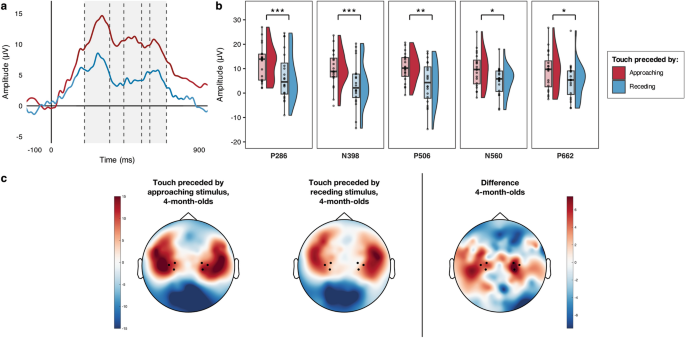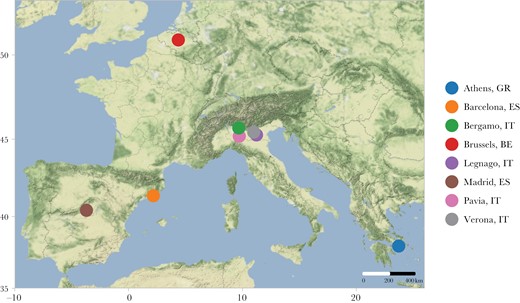2023-11-21 バーミンガム大学
◆これにより、赤ちゃんは見たものと感じたものを結びつけ、周囲の空間との相互作用を理解していることが示唆され、発達初期からこれらの能力が見られることが明らかになりました。今後は新生児を対象に研究し、乳児が発達しつつある脳活動の詳細を探る計画です。
<関連情報>
- https://www.birmingham.ac.uk/news/2023/babies-as-young-as-four-months-show-signs-of-self-awareness-study
- https://www.nature.com/articles/s41598-023-45897-4
身体に接近する視覚的物体は、生後4ヶ月のその後の体性感覚処理を調節する Visual objects approaching the body modulate subsequent somatosensory processing at 4 months of age
Giulia Orioli,Irene Parisi,José L. van Velzen & Andrew J. Bremner
Scientific Reports Published:21 November 2023
DOI:https://doi.org/10.1038/s41598-023-45897-4

Abstract
We asked whether, in the first year of life, the infant brain can support the dynamic crossmodal interactions between vision and somatosensation that are required to represent peripersonal space. Infants aged 4 (n = 20, 9 female) and 8 (n = 20, 10 female) months were presented with a visual object that moved towards their body or receded away from it. This was presented in the bottom half of the screen and not fixated upon by the infants, who were instead focusing on an attention getter at the top of the screen. The visual moving object then disappeared and was followed by a vibrotactile stimulus occurring later in time and in a different location in space (on their hands). The 4-month-olds’ somatosensory evoked potentials (SEPs) were enhanced when tactile stimuli were preceded by unattended approaching visual motion, demonstrating that the dynamic visual-somatosensory cortical interactions underpinning representations of the body and peripersonal space begin early in the first year of life. Within the 8-month-olds’ sample, SEPs were increasingly enhanced by (unexpected) tactile stimuli following receding visual motion as age in days increased, demonstrating changes in the neural underpinnings of the representations of peripersonal space across the first year of life.


